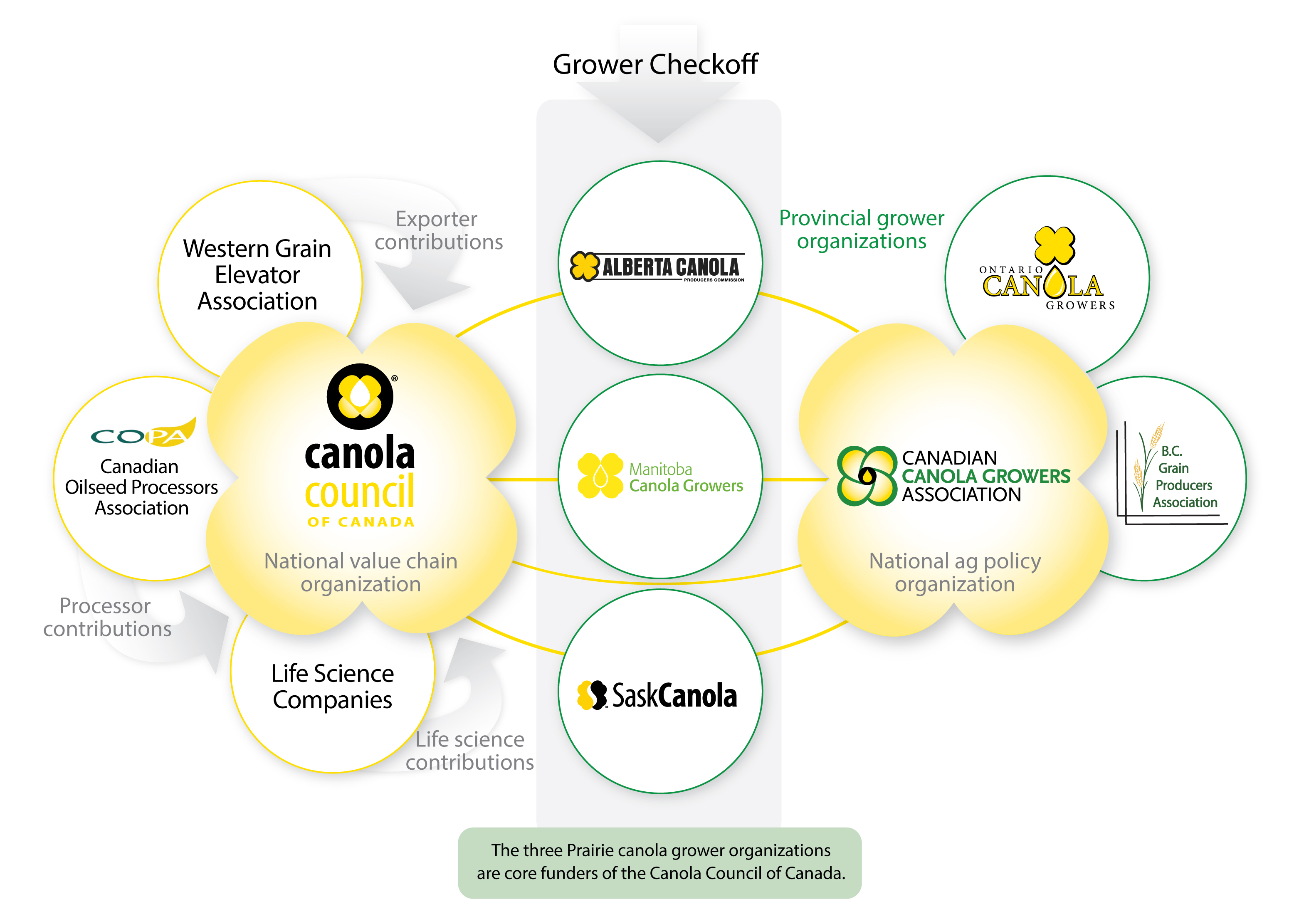China's Canola Supply Chain: Adapting To The Canada Break

Table of Contents
The Impact of the Canada-China Canola Trade Dispute
The Canada-China canola trade dispute, which began in 2019, significantly disrupted the flow of canola from Canada to China. Canadian canola, previously a dominant player in the Chinese market, faced various accusations from Chinese authorities, leading to import restrictions and significant delays. This had far-reaching consequences:
- Reduced canola imports from Canada: China's reliance on Canadian canola plummeted, creating a significant gap in its edible oil supply.
- Increased reliance on alternative suppliers: China was forced to seek alternative sources of canola, leading to increased imports from other countries.
- Price volatility in the global canola market: The disruption caused significant price fluctuations, impacting both producers and consumers globally.
- Impact on Chinese food processing and edible oil industries: The reduced availability and increased cost of canola impacted various downstream industries relying on canola oil and meal.
- Geopolitical implications of the trade dispute: The dispute highlighted the vulnerabilities of relying on a single major supplier for crucial agricultural commodities, emphasizing the need for diversified supply chains. The incident underscored the complexities of agricultural trade and its entanglement with international relations.
Diversification of Canola Sources for China
Faced with the reduction in Canadian canola imports, China actively sought alternative suppliers. This diversification strategy involved:
- Increased imports from Australia: Australia quickly became a major beneficiary, significantly increasing its canola exports to China.
- Increased imports from Ukraine: Ukraine also saw a surge in demand, exporting significant quantities of canola to fill the gap left by Canada.
- Exploration of sources in Russia and other regions: China actively explored other potential suppliers, including Russia, and countries in South America, though logistical and quality control challenges remain.
- Challenges of relying on multiple, geographically diverse suppliers: Managing a more complex supply chain with diverse logistics, quality control standards, and potential political risks adds complexity and costs.
- Potential risks associated with over-reliance on specific alternative suppliers: Becoming heavily dependent on any one alternative supplier carries similar risks to those previously experienced with Canada. Geopolitical factors, weather patterns, and domestic policies in those countries can impact China's canola supply.
Investing in Domestic Canola Production
To reduce its dependence on imports, China has invested heavily in boosting its domestic canola production. This involves:
- Government subsidies and incentives for canola farmers: Significant financial support aims to encourage greater canola cultivation within the country.
- Technological advancements in canola cultivation: Improved seed varieties, advanced farming techniques, and better pest management are being implemented to increase yields.
- Expansion of canola planting areas: Land previously used for other crops is being repurposed for canola cultivation to meet growing demand.
- Challenges faced in increasing domestic production: Challenges include achieving higher yields comparable to those in Canada, limitations in suitable land availability, and climate-related risks in certain regions.
- Long-term viability of increased domestic production to meet demand: Whether domestic production can fully meet China's burgeoning canola demand remains a question, requiring sustained investment and technological innovation.
The Future of China's Canola Supply Chain
The long-term implications of the Canada-China canola trade dispute and China's subsequent adaptations are complex and multifaceted:
- Potential for renewed trade relations with Canada: While unlikely in the short term, a future reconciliation is not entirely impossible, depending on geopolitical shifts and diplomatic efforts.
- The ongoing need for supply chain diversification and resilience: China's experience underscores the critical importance of diversified sourcing and robust supply chains to mitigate risks.
- The role of technology and innovation in securing canola supplies: Advanced technologies in agriculture, transportation, and logistics will play a crucial role in ensuring a stable and efficient supply.
- Long-term impact on global canola prices and market dynamics: The adjustments in supply and demand will continue to shape global canola prices and market dynamics for the foreseeable future.
- Potential for strategic partnerships with other canola-producing nations: China might forge stronger relationships with key canola suppliers to enhance its supply chain security.
Conclusion
China's canola supply chain has undergone a significant transformation due to the disruption of imports from Canada. The country has successfully diversified its sources, invested in domestic production, and is working to build a more resilient supply chain. However, challenges remain in ensuring consistent, reliable, and cost-effective canola supplies. Understanding the complexities of China's canola supply chain is crucial for businesses involved in the global canola market. Stay informed about the latest developments and adaptations within China's canola import and production strategies to navigate this dynamic and evolving landscape. Further research into the long-term implications of this disruption on China's canola supply chain is highly recommended.

Featured Posts
-
 Ice Protest Leads To Newark Mayor Ras Barakas Arrest
May 10, 2025
Ice Protest Leads To Newark Mayor Ras Barakas Arrest
May 10, 2025 -
 Is Benson Boone Copying Harry Styles The Singer Responds
May 10, 2025
Is Benson Boone Copying Harry Styles The Singer Responds
May 10, 2025 -
 Weight Loss Market Shift Weight Watchers Bankruptcy And The Rise Of Pharmaceuticals
May 10, 2025
Weight Loss Market Shift Weight Watchers Bankruptcy And The Rise Of Pharmaceuticals
May 10, 2025 -
 Behind The Scenes Of Celebrity Antiques Road Trip An Insiders Look
May 10, 2025
Behind The Scenes Of Celebrity Antiques Road Trip An Insiders Look
May 10, 2025 -
 Indonesias Foreign Exchange Reserves Significant Drop Due To Rupiah Pressure
May 10, 2025
Indonesias Foreign Exchange Reserves Significant Drop Due To Rupiah Pressure
May 10, 2025
